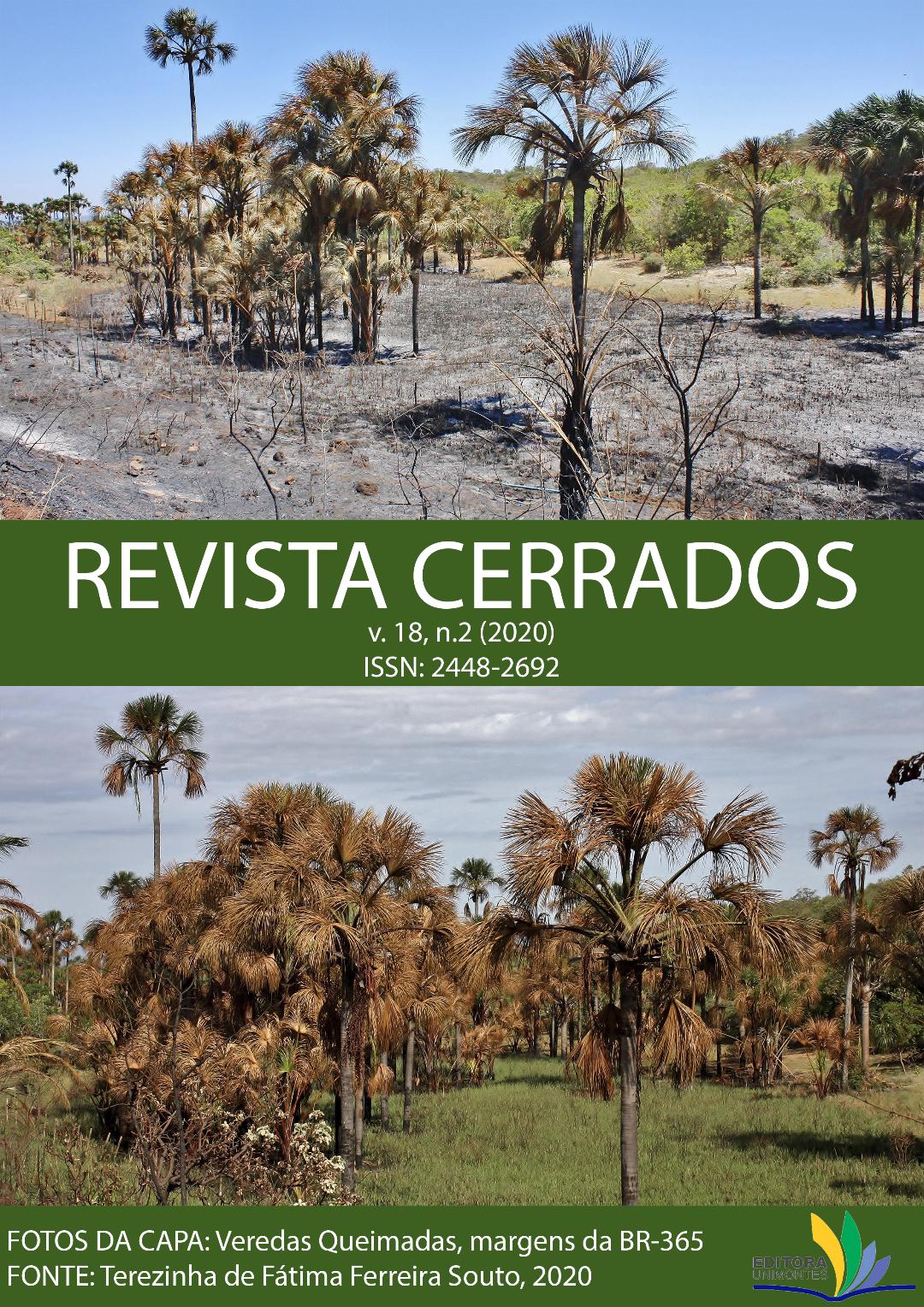Geographical Indication social construction for aroeira honey in the Northern Minas Gerais State: an analysis of actors and processes
DOI:
10.46551/rc24482692202016Keywords:
Geographical Indication; Apiculture; Northern Minas Gerais State; Aroeira honey.Abstract
The process of identifying specific attributes for Aroeira Honey in the Northern Minas Gerais State brought new perspectives for adding value to regional apiarian production from the possibility of recognition of the geographical indication – GI. Therefore, this paper sought to understand the process of obtaining GI from Aroeira Honey in Northern Minas Gerais State as a social construction as a result of an arrangement involving regional and local organizations and institutions articulate at regional and local level. The research method involved bibliographical review, interviews to apiarists, Presidents of associations and representatives of supporting institutions. As secondary data we also used numbers on honey production in the region. We concluded that the possibility of GI registration came to the apiarists in a top to bottom way by institutions like Ezequiel Dias Foundation (FUNED), São Francisco and Parnaíba Valleys Development Company (CODEVASF), Brazilian Micro and Small Business Support Service (SEBRAE) and Ministry of Agriculture, Livestock and Supply (MAPA). These institutions envisioned a possibility of value addition and territorial development. Not even the territorial delimitation of the Aroeira Honey GI is not a result of a social construction by the regional apiarists, but rather the characterization of honey and endorsed by Institutions.
Downloads
References
ABRAMOVAY, R.. Entre Deus e o diabo mercados e interação humana nas ciências sociais. Tempo Social, revista de sociologia da USP, São Paulo, v. 16, n. 2, 2004.
ARTHUR, W.B. “Competing technologies, increasing returns and lock-in by historical events”, Economic Journal, [S./l.], v. 99, n.1, pp. 116-131, 1989.
BELAS, C. A. Indicações geográficas e salvaguarda do patrimônio cultural: artesanato de capim dourado Jalapão-Brasil. 2012. 266f. Tese (Doutorado em Ciências Sociais em Desenvolvimento, Agricultura e Sociedade), Universidade Federal Rural do Rio de Janeiro, Rio de Janeiro, 2012.
BELAS, C. A.; WILKINSON, J. Indicações geográficas e a valorização comercial do artesanato em Capim-dourado no Jalapão. Sustentabilidade em Debate, [S./l.], v. 5, n. 3, p. 56-78, 2014.
BARZEL, Y. Economic analysis of property rights. Cambridge: Cambridge university press, 1997.
BELLETTI, G., Origin labelled products, reputation and heterogeneity of firms. In: EUROPEAN ASSOCIATION OF AGRICULTURAL ECONOMISTS SEMINAR, 67., 1999, Le Mans, França. Anais […]. Le Mans: EAAE, 1999.
BRAMLEY, C.; BIÉNABE, E.; KIRSTEN, J. The economics of geographical indications: towards a conceptual framework for geographical indication research in developing countries. The economics of intellectual property, n. 1012, p. 109-149, 2009.
BRASIL. Decreto n. 16.264, de 19 de dezembro de 1923. Crêa a Directoria Geral da Propriedade Industrial. Disponível em: <http://www2.camara.leg.br/legin/fed/ decret/1920-1929/decreto-16264-19-dezembro-1923-505763- publicacaooriginal-1-pe.html>. Acesso em: 10 set. 2019.
BRASIL. LEI 9.279, de 14 de maio de 1996 (Código de Propriedade Industrial). Regula direitos e obrigações relativos à propriedade industrial. 1996. Disponível em: http://www.planalto.gov.br/CCIVIL/Leis/L9279.htm. Acesso em: 01 jun. 2018.
BURT, R. S. The social structure of competition. In: NOHRIA, N.; ECCLES, R. G. Networks and organizations: structure, form and action. Boston: Boston Harvard Business School, 1992.
CARVALHEIRO, E. M. A Construção Social de Mercados Para Produtos da Agroindústria Familiar. 2010. 2014 f. Tese (Doutorado em Desenvolvimento Rural), Universidade Federal do Rio Grande do Sul, Porto Alegre, 2010.
CARVALHO, G. dos R.; DIAS, A. B. Indicação Geográfica no Território do Sisal na Bahia: Possibilidades e Perspectivas. Revista GEINTEC, São Cristóvão/SE, v. 2, n.4, p.365-377, 2012.
CERDAN, C. M.; Et. Al.. Gestão e Controle Pós-reconhecimento das Indicações Geográficas. In: CERDAN, Claire Marie; BRUCK, Kelly Lissandra.; SILVA, Aparecido da. Curso de propriedade intelectual & inovação no agronegócio: Módulo II, Indicação Geográfica. 2ª Edição Brasília: MAPA, 2010.
CERDAN, C.. Contribuição das políticas de qualidade agroalimentar para o desenvolvimento territorial sustentável. s.d. Disponível em: http://www.cirad.org.br/pesquisa_e_desenvolvimento/desenvolvimento_territorial/contribuicao_das_politicas. Acesso em: junho 2010.
COLEMAN, J. S. Foundations of Social Theory. Cambridge MA., Harvard University Press, 1990.
DAVIS, L. E,; NORTH, D. C. Institutional change and American economic growth. Cambridge: Cambridge University Press, 1971.
GONÇALVES, M. F. W. Propriedade industrial e a proteção dos nomes geográficos: indicações geográficas, indicações de procedência e denominações de origem. Curitiba: Juruá Editora, 2008.
GUEDES, C. A. M.; SILVA, R. Denominações Territoriais Agroalimentares, Políticas e Gestão Social: Argentina, Brasil e a Experiência Espanhola no Contexto Europeu. Sevilha: Universidade de Sevilha, 2011.
GRANOVETTER, M. Economic action and social structure: The problem of embeddedness. American journal of sociology,[S./l.], v. 91, n. 3, p. 481-510, 1985.
GRANOVETTER, M. The social construction of corruption. In: NEE, V.; SWEDBERG, R. (Ed.). On capitalism. Stanford: Stanford University Press, 2007.
GRANOVETTER, M. The Strength of Weak Ties. American Journal of Sociology, [S./l.], n. 78, p. 1360-1380, 1983.
GULATI, R; GARGIULO, M. Where do interorganizational networks come from?. American Journal of Sociology, [S./l.], v. 104, n. 5, p. 1439–1493, 1999.
HOFF, D. N.; JESUS, C. M.; ORTEGA, A. C. Denominações de Origem no Brasil e na Espanha: análise de casos selecionados sob a noção de Terroir. In: Antonio Cesar Ortega; Eduardo Moyano Estrada. (Org.). Desenvolvimento em Territórios Rurais: estudos comparados de Brasil e Espanha. Campinas: Editora Alínea, 2015, v. 1, p. 151-176.
KRACKHARDT, D. The strength of strong ties: the importance of Philos in organizations. In: NOHRIA, N; ECCLES, R. G. (eds.). Networks and Organizations: Structure, Form and Action. Boston, MA: Harvard Business School Press, 1992.
INSTITUTO NACIONAL DA PROPRIEDADE INDUSTRIAL (INPI). Instrução Normativa nº 25/2013 INPI, de 21 de agosto de 2013. Estabelece as condições para o registro das Indicações Geográficas. 2013. Disponível em:http://www.inpi.gov.br/legislacao-1/in_25_21_de_agosto_de_2013.pdf. Acesso em: 11 jun. 2018.
INSTITUTO NACIONAL DA PROPRIEDADE INDUSTRIAL (INPI). Instrução Normativa No 25/2013. Disponível em: http://www.inpi.gov.br/legislacao-1/in_25_21_de_agosto_de_2013.pdf. Acesso em: 10 set. 2019.
INSTITUTO NACIONAL DA PROPRIEDADE INDUSTRIAL (INPI). Instrução Normativa nº 095/2018. Disponível em: http://www.inpi.gov.br/noticias/inpi-aprova-in-para-registro-de-indicacoes-geograficas/IN952018publicadanaRPI2504de02012019.pdf . Acesso em: 10 set. 2019.
KARPIK, L.. L'économie des singularités. Paris: Gallimard, 2007.
JACOBIDES, M. G.; WINTER, S. G. The co‐evolution of capabilities and transaction costs: Explaining the institutional structure of production. Strategic Management Journal, [S./l.],v. 26, n. 5, p. 395-413, 2005.
MAKISHI, F.; SILVA, V. l. dos S.; SOUZA, R. de C.; NUNES, R.. Estratégias de diferenciação e sistemas agroalimentares localizados. In: ZUIN, Luís Fernando Soares; QUEIROZ, T. R. (Coor.). Agronegócio Gestão, Inovação e Sustentabilidade. 2. ed. São Paulo: Editora Saraiva Educação, 2019.
MASCARENHAS, G.; WILKINSON, J.. Indicações geográficas em países em desenvolvimento: potencialidades e desafios. Revista de Política Agrícola, Brasília, v. 23, n. 2, p. 103-115, 2014.
MÉNARD, C.; SAES, M. S. M.; SILVA, V. L. dos S.; RAYNAUD, E. Economia das organizações: formas plurais e desafios. São Paulo: EditoraAtlas, 2014.
NIEDERLE, P. A.. (Org.). Indicações geográficas: qualidade e origem nos mercados alimentares. Porto Alegre: UFRGS, 2013.
NIEDERLE, P. A.; MASCARENHAS, G. C. C.; WILKINSON, J. Governança e institucionalização das indicações geográficas no Brasil. Revista de Economia e Sociologia Rural, [S./l.], v. 55, n. 1, p. 85-102, 2017.
NORTH, D. C. Institutions. Journal of economic perspectives, [S./l.], v. 5, n. 1, p. 97-112, 1991.
PECQUEUR, Bernard; SALAIS, Robert. Dynamiques territoriales et mutations économiques. Paris: l’Harmattan, 1996.
PIMENTEL, L. O.. Os Desafios dos Aspectos Legais na Prática de Estruturação das Indicações Geográficas. In: DALLABRIDA, V. R. Território, identidade territorial e desenvolvimento regional: reflexões sobre indicação geográfica e novas possibilidades de desenvolvimento com base em ativos com especificidade territorial. São Paulo, SP: LiberArs, 2013.
POWELL, W.W. Neither Market nor Hierarchy: Networks Forms of Organization. Research in Organizational Behavior, [S./l.], v.12, p.295-336, 1990.
POWELL, W.W., et. al.. Interorganizational collaboration and the locus of innovation: Networks of learning in biotechnology. Administrative Science Quarterly, [S./l.], v.41, p.116-145, 1996.
RAUD-MATTEDI, C.. A construção social do mercado em Durkheim e Weber: análise do papel das instituições na Sociologia econômica clássica. Revista Brasileira de Ciências Sociais, [S./l.], v. 20, n. 57, p. 127-142, 2005.
SWEDBERG, R.. New economic sociology: What has been accomplished, what is ahead? Acta sociologica, [S./l.], v. 40, n. 2, p. 161-182, 1997.
UZZI, B.. Social structure and competition in interfirm networks: The paradox of embeddedness. Administrative science quarterly, Ithaca, v. 42, n.1, p. 35-67, 1997.
Published
How to Cite
License
Copyright (c) 2020 Revista Cerrados

This work is licensed under a Creative Commons Attribution-NonCommercial-ShareAlike 4.0 International License.
In this journal, the copyrights for published articles belong to the author (s), with the rights of the first publication belonging to Revista Cerrados. The articles are publicly accessible, free to use, their own assignments, educational assignments and non-commercial applications.


















